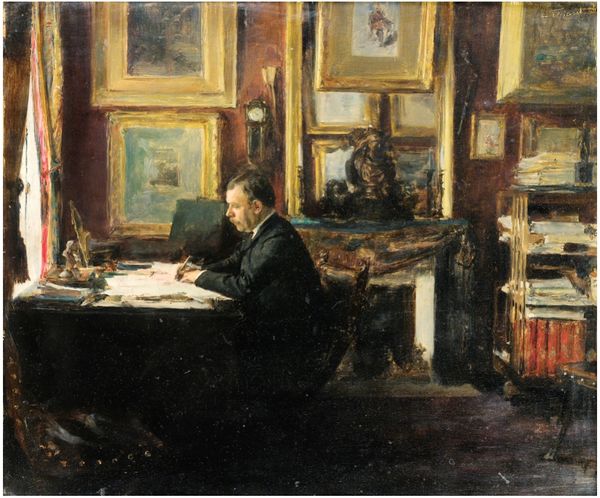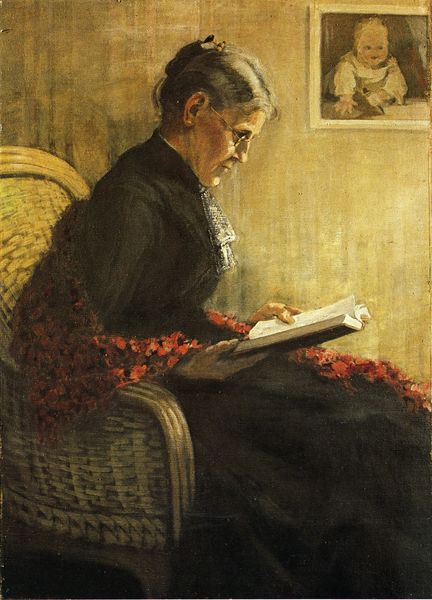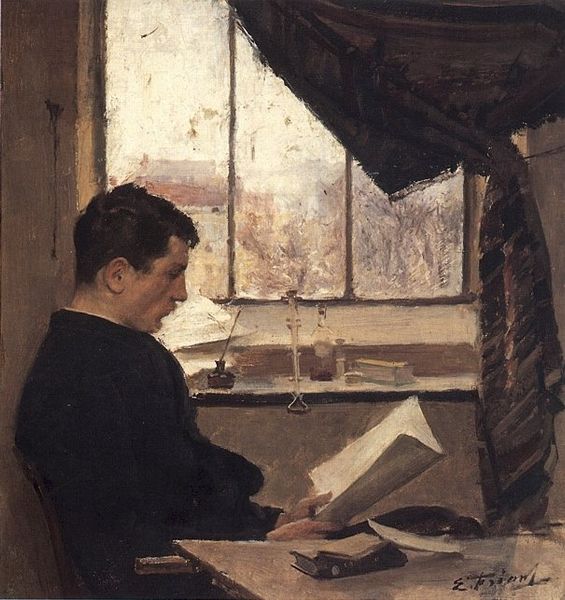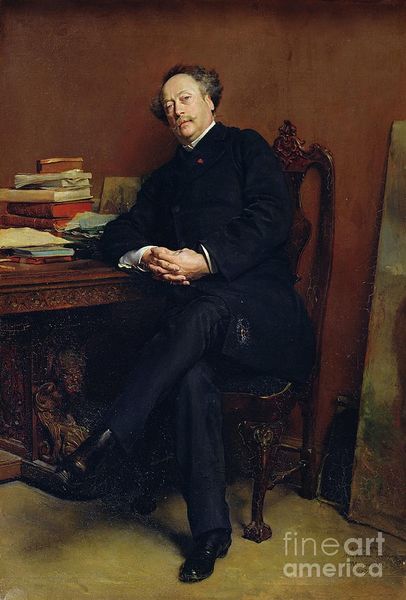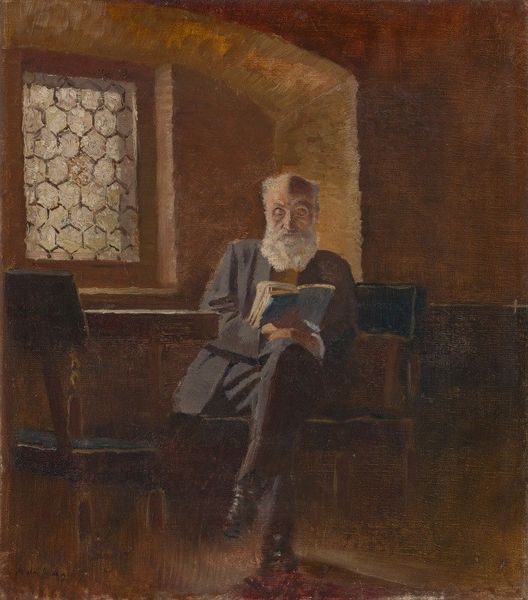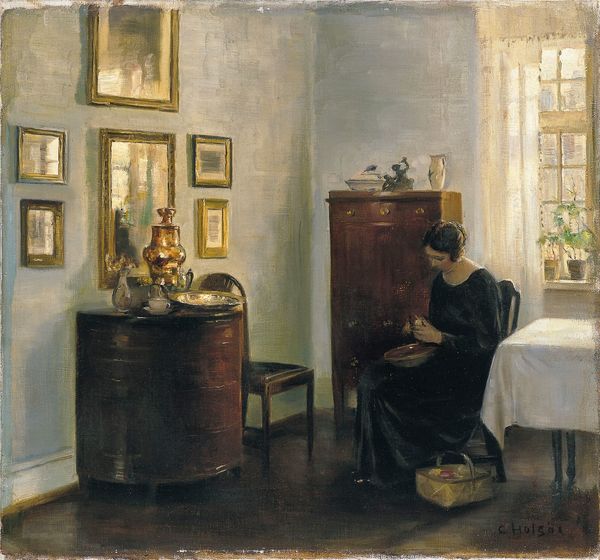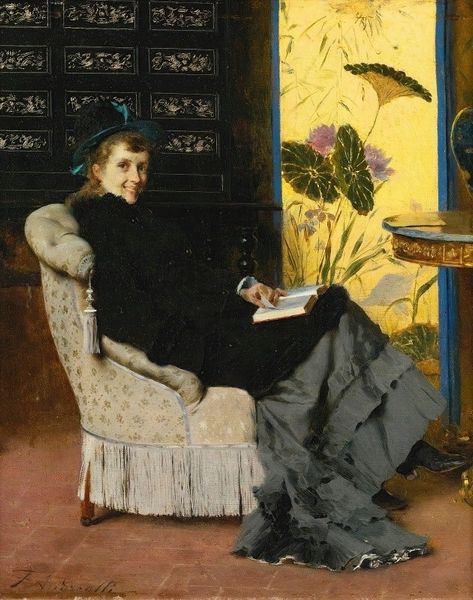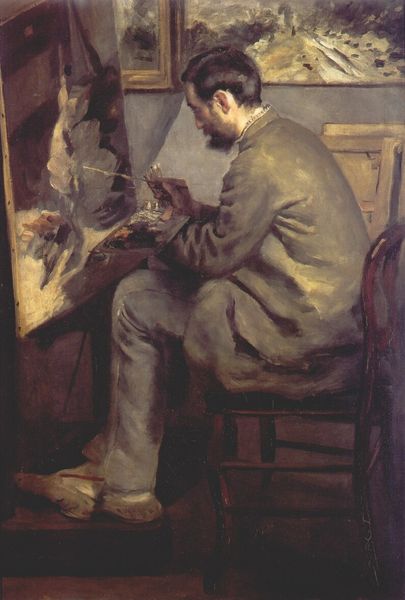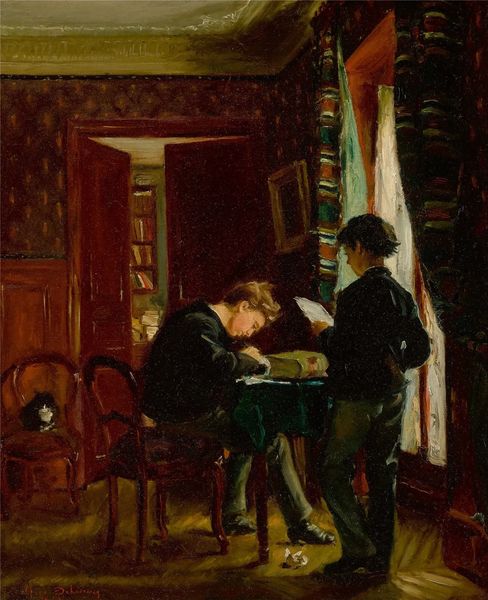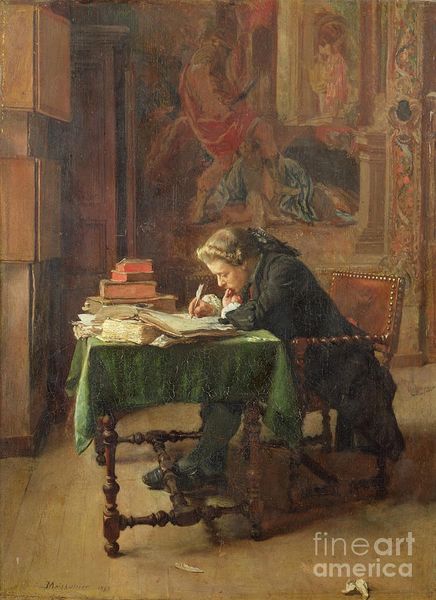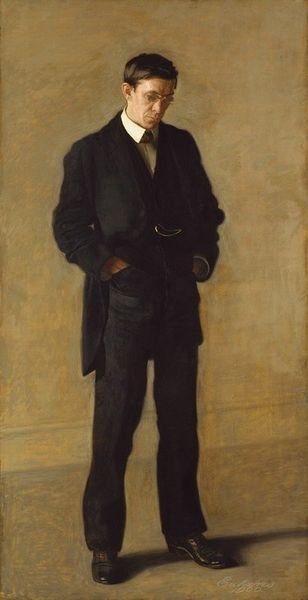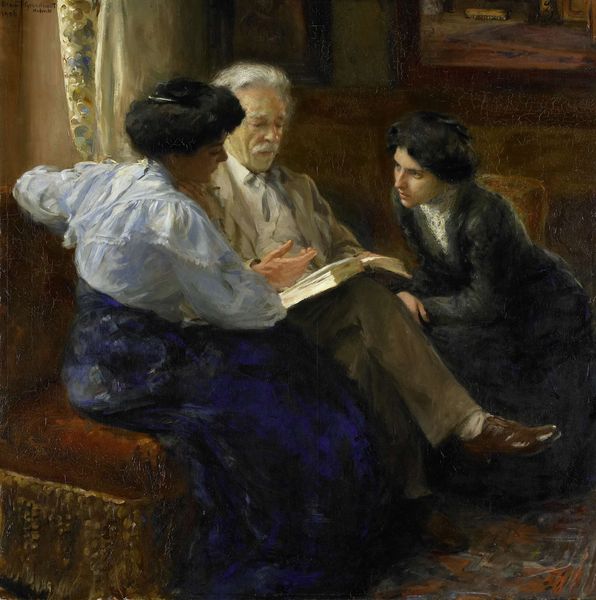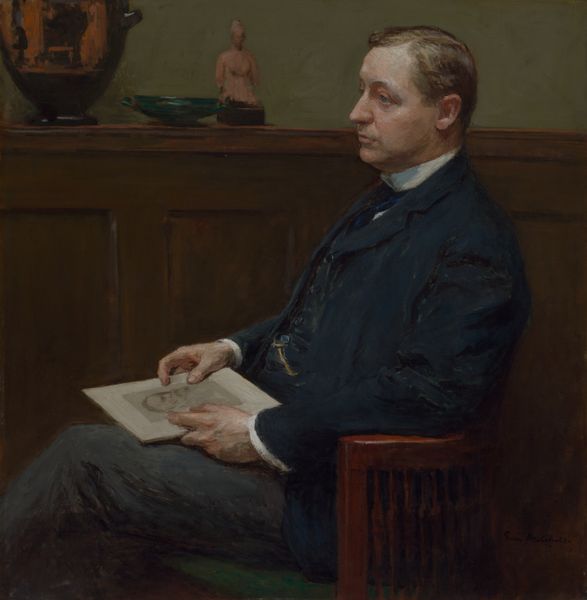
Dimensions: 45.72 x 38.1 cm
Copyright: Public domain
Curator: William Merritt Chase created this portrait of Elbert Hubbard, the writer and philosopher, around 1902. It's an oil painting, fairly intimate in scale. Editor: It feels somber. The restricted palette, predominantly browns and blacks, gives the painting a reserved, almost melancholic mood. And notice how the light seems to concentrate only on the subject's face and the pages he's reading. Curator: That very selective lighting reinforces Hubbard's role as a man of thought and reflection. In terms of symbols, the act of reading itself suggests learning and engagement with knowledge, a common aspiration from that era. But consider the setting; it seems to depict his office or study, and it represents his commitment to craft, and labor, not mere thought. Editor: Indeed. Looking closer, the composition seems to create these stark, nearly geometrical relationships. The angles of his body, the hard edge of the table juxtaposed with the organic shapes of the books and pitcher… it creates a subtle tension. Is he contemplative, or burdened? Curator: I see a very different relationship in the figure’s pose, almost an unconscious posture suggesting a blend of weariness, perhaps due to intense study. He isn't presented as simply a stoic thinker, but a man of combined spirit, knowledge and purpose. That feeling is then underlined with everyday fatigue. This brings in another question of representation, does it intend to show a “flaw” in him as some of his followers have done? Editor: Possibly. Though from a formal perspective, I'm intrigued by the way the painterly brushstrokes contrast the relatively sharp lines of his face and collar. The rest feels almost deliberately unfinished. Curator: Perhaps it's also revealing Hubbard's more complex personality. Hubbard had built his career in questioning everything including, cultural convention. By not posing him with conventional symbol markers, we can suggest Hubbard as more approachable than we expect him to be, but simultaneously also to represent his complexity and maybe the impossibility of easy understanding. Editor: That’s an interesting point. This portrait transcends a simple record. It shows, in very muted tones, something far more complex, even raw. Curator: Yes. What this art provides is, as with all true portraits, the glimpse of the sitter's inner depths by external factors that defined and surrounded them. Editor: It becomes not just likeness but a semiotic puzzle—decoding Hubbard’s world one brushstroke at a time.
Comments
No comments
Be the first to comment and join the conversation on the ultimate creative platform.
